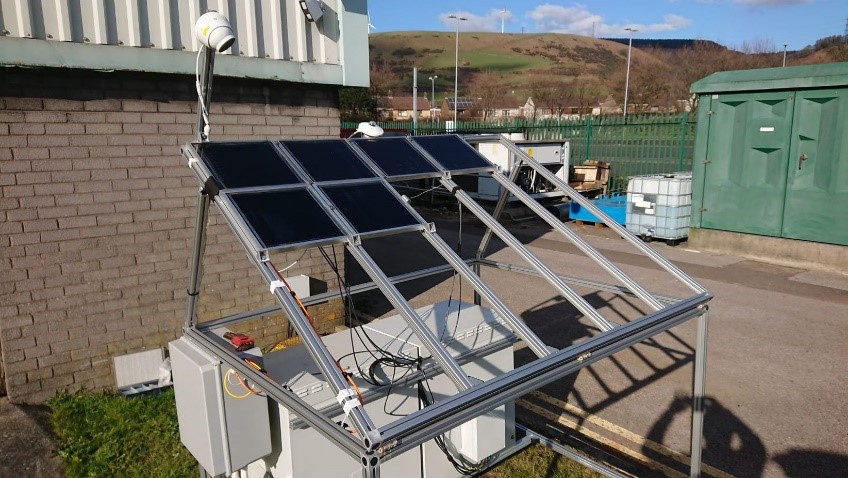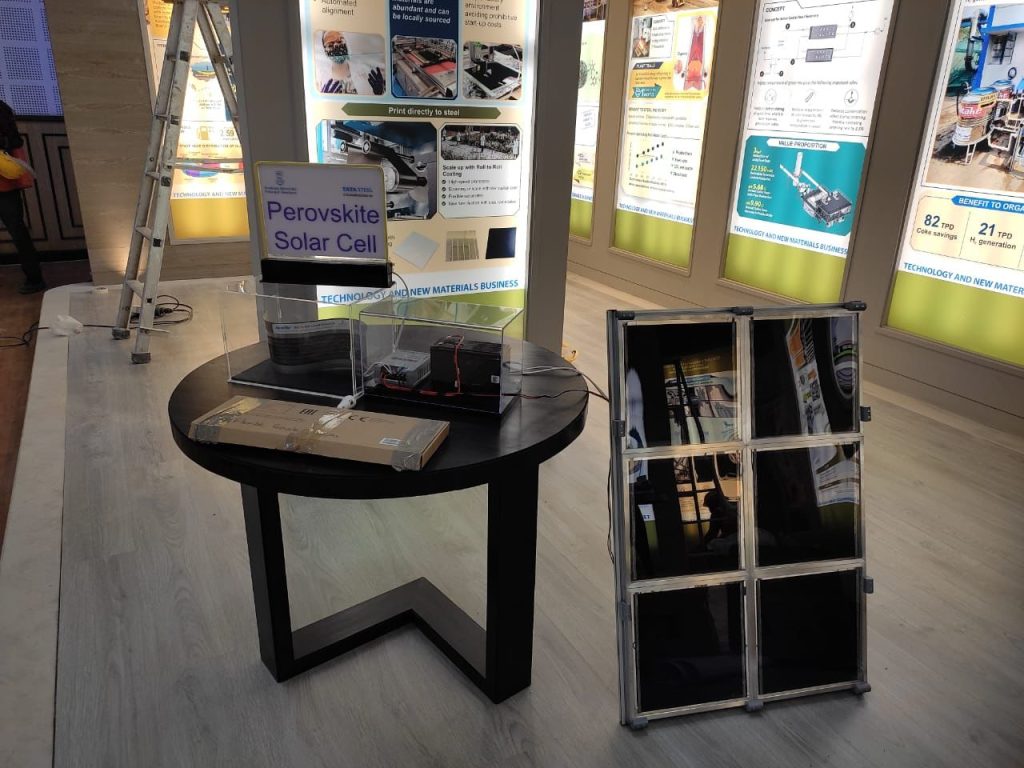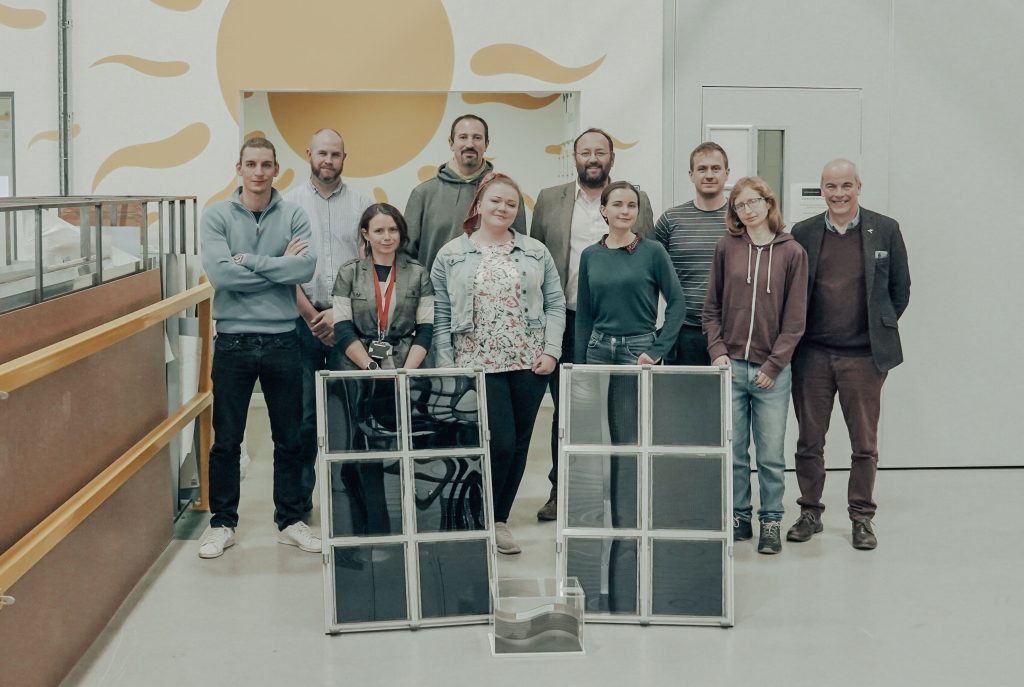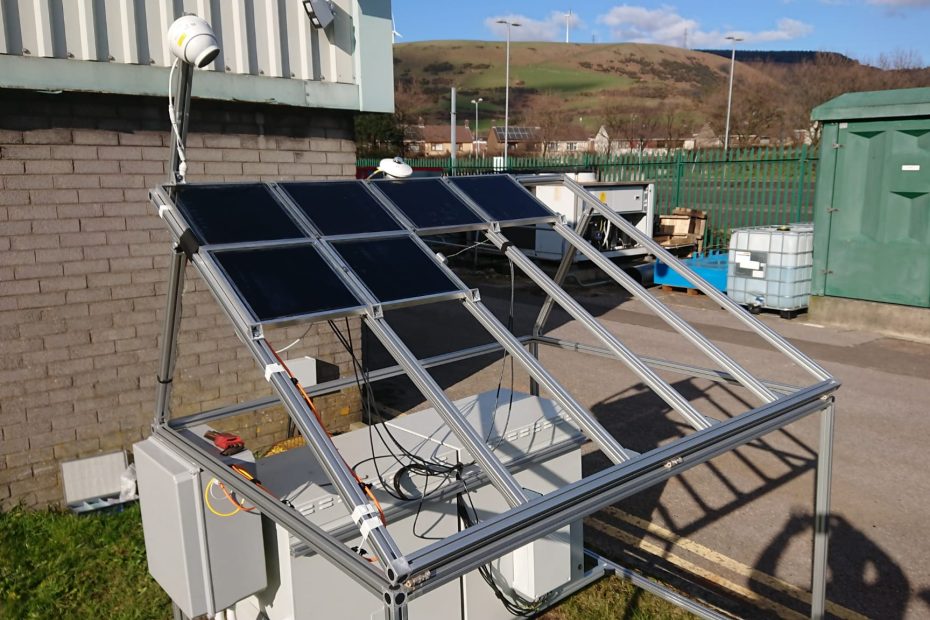Last January, our PV team decided to put the first UK-made carbon perovkiste solar panels through their paces by testing their performance in the South Welsh climate. One year on, Dr Becky Bolton and Carys Worsley tell us how they went about it, what they’ve learned from a year’s data, and what’s to come in the next year.
One of the key aims for SPECIFIC as an Innovation and Knowledge Centre is to bridge the gap between lab research and industry. For the last decade, we have been riding a wave of ingenuity in solar technology; working with both organic and perovskite generations of solar cells. Having found ourselves a niche of green, low cost and efficient devices in the screen-printed carbon perovskite solar cell, January 2022 was finally the right time to put them to the test.
It began with the question of whether we could scale-up the devices to a commercial size, from 1cm2 lab-scale to 30cm x 30cm commercial-scale modules. After all, every process involved in making these devices (screen-printing, drop casting, mechanical scribing) was selected for the sole reason that it could easily be up-scaled. In last few months of 2021 we were able to create functioning 30cm x 30cm panels. Some of these panels travelled to Jamshedpur, India, for demonstration at the Tata Founder’s Day event.
Creating functioning 30 cm x 30 cm carbon perovskite solar panels was a massive milestone in the project and unique to Europe. However, at the time, we did not have a reliable method for measuring the performance of these innovative devices. So, we decided to build one.
The PV weathering station
The weathering station we built consists of aluminium framing pitched at 32° to mount the panels and a junction box to fully contain the electrical devices required to monitor the solar performance of the panels, temperature, and solar irradiance.
On January 26th 2022 the first UK-fabricated carbon perovskite solar panels were mounted onto the SPECIFIC weathering station at the Solar Heat Energy Demonstrator (SHED) building in Port Talbot. Thereafter we have been able to monitor the solar performance of the panels continuously for a year. In that time, we also studied the effectiveness of the panel encapsulation, which has led to a change in procedure. Additionally, a year of data enabled us to observe how irradiation and temperature change across the seasons affect the panels. This lets us know how energy output can vary through the year.
In the last year, we have presented our ground-breaking work at a number of conferences, including:
- IMRC 2022 in Cancun, Mexico
- ISOS XIII in Sønderborg, Denmark
- MRS Fall Meeting & Exhibit in Boston, USA.
What’s next?
Following this year of success, we are excited to collaborate with Cinvestav in Merida, Mexico to recreate another weathering station at their research institute, with a goal to replicate our Port Talbot setup. This will allow us to compare solar panel performance in the dreary South Wales weather to that in the hot and humid Mexican climate.
Over the next year, we will continue to work on improving the performance and stability of our devices. We are also hoping to ship our panels out to more locations in different climates, to get a solid database on how they perform in different environments.




